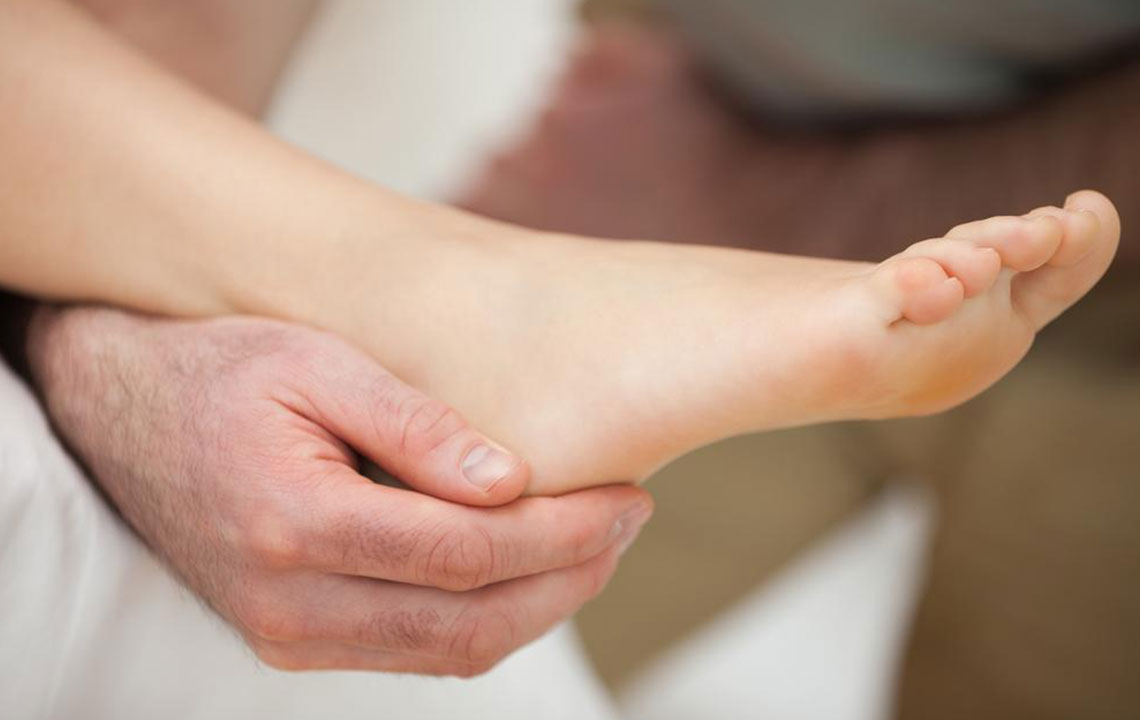Comprehensive Guide to Ankle Discomfort: Causes, Symptoms, and Treatment Strategies
This comprehensive guide explores the main causes of ankle discomfort, including sprains, arthritis, tendinitis, gout, and more. It explains symptoms, diagnosis, and treatment options to help individuals understand their ankle pain and when to seek medical advice. Proper care and early intervention are emphasized to prevent complications and promote quick recovery, making this article a vital resource for those experiencing ankle issues or looking to maintain ankle health.

Understanding the Causes of Ankle Discomfort and How to Identify Them
Ankle pain and discomfort are common issues that affect people of all ages, and understanding their root causes is essential for proper treatment and recovery.
Historically, ankle injuries have been prevalent, especially among athletes, adventurers, and physically active individuals. The significance of ankle health is reflected in countless stories of sports heroes and explorers who faced setbacks due to ankle injuries. While sprains and traumatic injuries are well-known culprits, persistent ankle pain can often signal underlying health conditions that require attention. Recognizing these causes early can lead to more effective treatment options, prevent complications, and get individuals back to their daily routines faster.
Below are detailed explanations of the most common causes behind ankle swelling and pain, along with guidance on symptoms and when to seek medical help.
Major Causes of Ankle Discomfort
1. Ankle Sprains: The Most Frequent Injury
Ankle sprains are among the most common causes of ankle pain, especially in active individuals. A sprain occurs when the ligaments that stabilize the ankle joint are stretched beyond their limits or torn due to sudden twisting, rolling, or trauma during physical activity like running, jumping, or sports. Ligaments are fibrous tissues that hold bones together, and their integrity is vital for ankle stability.
Symptoms of a sprain vary according to severity but often include immediate pain, swelling, bruising, and difficulty bearing weight on the affected foot. Mild sprains may involve only ligament overstretching, while severe sprains can entail complete tears, leading to significant instability and deformity. Right after injury, applying ice, resting, and elevating the ankle can help reduce swelling, but professional medical evaluation is essential to determine the extent of damage through physical examination and imaging studies.
Proper diagnosis is crucial for treatment, which may involve immobilization with braces, physical therapy, or, in severe cases, surgical intervention. Early treatment minimizes the risk of chronic instability and recurrent sprains.
2. Arthritis: Chronic Joint Degeneration
Unlike sprains, arthritis involves the gradual deterioration of joint tissues, causing persistent pain and stiffness. The ankle joint, like others, is susceptible to various forms of arthritis, with osteoarthritis and rheumatoid arthritis being the most prevalent.
Osteoarthritis (OA): Often called degenerative joint disease, OA develops over years due to wear and tear. It results from cartilage breakdown, leading to bones rubbing against each other, which causes pain, swelling, and loss of mobility. Factors contributing to OA include aging, previous injuries, genetic predisposition, and obesity. Symptoms typically worsen gradually, with stiffness after periods of inactivity and discomfort during movement.
Rheumatoid Arthritis (RA): RA is an autoimmune disease where the immune system erroneously attacks the synovial membrane lining the joint, causing inflammation, swelling, and joint destruction. It can affect the ankle joint and lead to deformities if untreated. Symptoms often include symmetrical swelling, warmth, pain, and morning stiffness lasting over an hour. Early diagnosis and disease-modifying treatments can help preserve joint function.
Another condition related to infection is Reiter's syndrome (reactive arthritis), which develops after certain infections and causes joint swelling, pain, and inflammation, often affecting the lower limbs including ankles. Managing underlying infections and anti-inflammatory therapies are essential in such cases.
3. Tendinitis: Inflammation of Tendons
Achilles tendinitis and other forms of tendinitis involve inflammation of tendons, the connective tissues that link muscles to bones. Tendinitis can develop due to repetitive movements, overuse, injury, obesity, or underlying health issues like diabetes. Athletes, runners, and individuals engaged in physical labor are particularly susceptible.
Symptoms include tenderness, stiffness, swelling, and sometimes a creaking sensation during movement. Over time, tendinitis can cause persistent pain and restrict mobility if not properly treated. Rest, ice, physical therapy, anti-inflammatory medications, and sometimes corticosteroid injections are standard treatments to reduce inflammation and promote healing.
4. Gout: Sudden and Severe Joint Pain
Gout is a type of inflammatory arthritis caused by the accumulation of uric acid crystals within the joint. High levels of uric acid in the bloodstream, often due to dietary factors or metabolic issues, lead to crystal formation and intense joint pain, especially in the big toe, but the ankle can also be affected.
A gout attack presents with sharp, intense pain, redness, swelling, and warmth around the affected joint. Attacks can occur suddenly and be extremely debilitating. Managing gout involves dietary adjustments—reducing purine-rich foods like red meat, shellfish, and alcohol—and medications such as colchicine or NSAIDs to control inflammation. Proper uric acid management prevents recurrent attacks and joint damage.
5. Flat Feet: Structural Anomalies
Flat feet, or fallen arches, are a hereditary condition where the arch of the foot is either absent or collapses over time. This structural anomaly causes abnormal pressure distribution across the foot and ankle, often leading to discomfort or pain, particularly after physical activity.
In some cases, flat feet are asymptomatic, but severe cases can lead to overpronation, ankle instability, and pain along the inner side of the ankle and foot. Supportive footwear, orthotic insoles, and stretching exercises are common management strategies. Surgery may be considered for severe cases that impair function or cause significant pain.
6. Fractures and Dislocations
Traumatic injuries such as fractures involve breaks in the ankle bones, commonly caused by falls, high-impact sports, or accidents. Symptoms include sharp pain, swelling, bruising, deformity, and inability to bear weight. Prompt medical attention is essential for proper diagnosis through X-rays and imaging, followed by immobilization, casting, or surgical repair.
Dislocations involve displacement of the ankle bones from their normal positions. This injury is painful and requires immediate reduction and stabilization by healthcare professionals to prevent damage to blood vessels, nerves, and surrounding tissues.
7. Circulatory Problems: Blocked Blood Vessels
In some cases, reduced blood flow due to blocked arteries or venous insufficiency can cause ankle pain, cramps, and swelling. This is often associated with peripheral artery disease (PAD) or blood clots. Such circulatory issues demand urgent medical review to prevent tissue damage and other complications.
In conclusion, ankle discomfort can stem from a multitude of causes ranging from injuries and degenerative diseases to circulatory and structural issues. Accurate diagnosis through physical examination, medical imaging, and laboratory tests is vital to determine the appropriate treatment. Preventative measures such as proper footwear, conditioning exercises, and injury management can reduce the risk of many ankle problems. Recognizing early symptoms and seeking medical intervention can significantly improve outcomes, restore mobility, and maintain overall ankle health for years to come.





